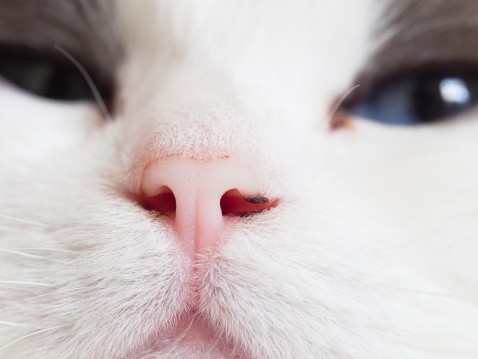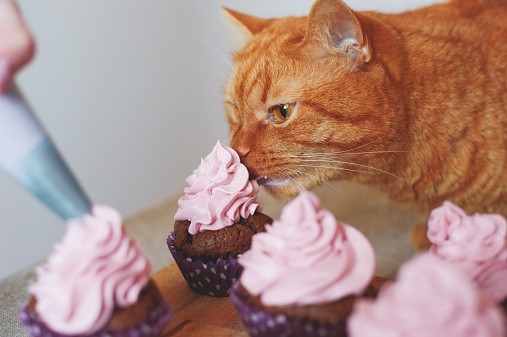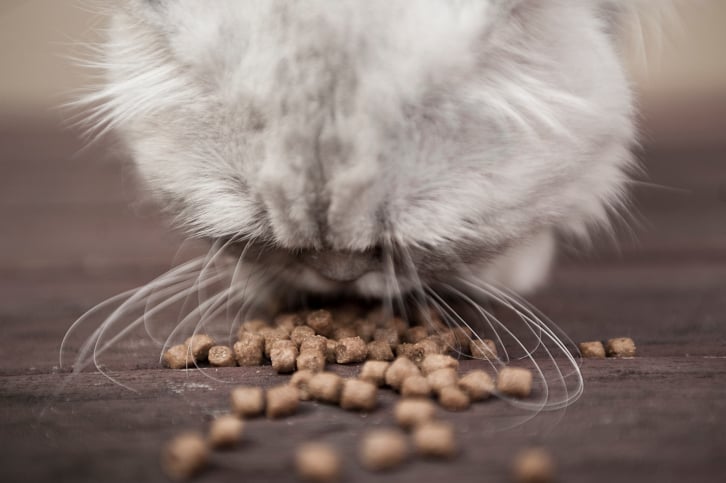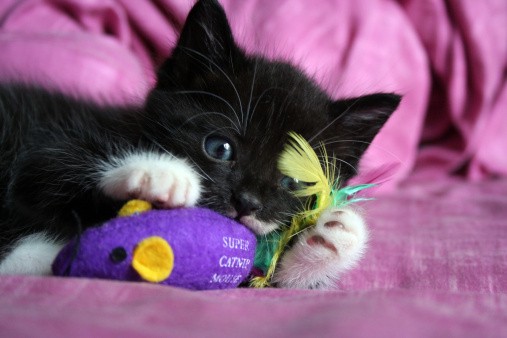Think you know all about cats? Here’s a bit of cat trivia to test your feline knowledge! Will you get a purr-fect score? Let’s find out…
1. True or False? You can tell a cat has a fever if he has a warm, dry nose.

False. Although a warm forehead might indicate that a human has a fever, a warm nose just means that, well, your cat has a warm nose! A cat’s regular body temperature is between 100.5 and 102.5 degrees Fahrenheit. Any higher (or lower) is a reason for your cat to see a veterinarian. And, the most accurate way to determine your cat’s temperature is to take it rectally, using a quick-read digital thermometer.
2. True or False? Cats can’t taste things that are sweet.

True. In fact, cat’s cannot taste things that are sweet! Because cats are exclusively meat-eaters, they do not have the ability to digest sugars, nor do they even have the ability to taste them! Now, before you say, “But my cat loves to eat whipped cream!” ..or ice cream, or any other sweet thing, just remember – your cat may be attracted to the smell, or the fat, or simply the texture of that sweet thing. All cats lack the genetic taste receptors (the scientific name “Tas1r2”) to taste sweetness. Besides, sweets aren’t good for them anyway. Stick with species-appropriate meaty cat treats instead!
3. True or False? Dry cat food (kibble) is good for cats because it keeps their teeth clean.
False. Dry cat food isn’t any better at cleaning your cat’s teeth than cookies and potato chips are at cleaning ours! What’s more, from a nutritional standpoint, kibble is the worst food you can feed because it often contains high carbohydrates and lacks the valuable moisture that cats need in their diets to stay healthy. If you want to keep your cat’s teeth clean, brush his teeth with a cat-safe toothpaste or use a dental cleaning additive that you add to his food or water and have your cat’s teeth cleaned by the veterinarian, if necessary.
4. True or False? All cats love catnip.

False. In fact, only about 50% of cats have any reaction at all to catnip, and young kittens and senior kitties don’t react to it at all. Is your cat part of the population that isn’t prone to catnip’s charms? Not to worry! Did you know there are catnip alternatives? The pulp from Tatarian Honeysuckle can produce a greater reaction than catnip, and affects more cats! Other alternatives that produce a similar effect are valerian root, lemongrass, silvervine (which has a much more intense and longer-lasting effect than catnip!), and cat thyme.
5. True or False? Only male cats spray.

False. It’s not as common, but female cats can spray, too. Spraying, or marking, is when a cat – most often a non-neutered male cat – sprays small amounts of urine to mark his (or her) territory. Urine marks are usually on vertical surfaces and usually smaller amounts. A cat that sprays will typically still use a litter box to urinate. There are a few reasons for spraying – an unneutered male will mark to let females know he’s ‘available’; in a multi-cat home, it’s more likely one will spray as a behavioral issue; and some cats will spray out of stress. Most spraying will stop when cats are fixed. If it doesn’t, address the reason for the spraying and be sure to clean all sprayed areas with a good enzymatic cleaner to discourage the cat from continuing to spray the same area.
How well did you score? Did you already know the answers or did you learn anything new? Let us know!





